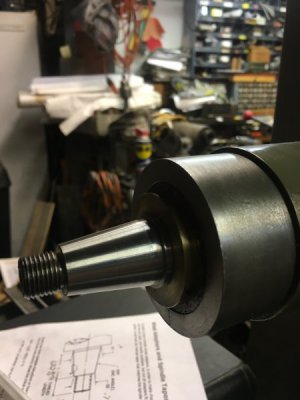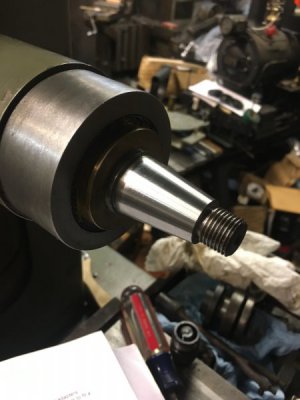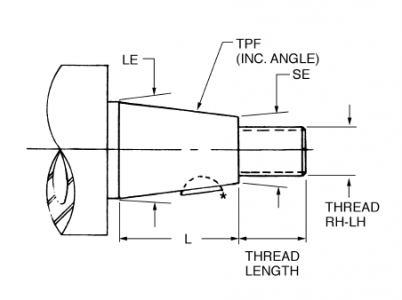- Joined
- Jul 2, 2014
- Messages
- 7,594
After we purchase and clean up our often old and neglected surface grinders, the usual next step is to grind in the table and both sides of the mag chuck. It is also about the most difficult job we can attempt on a surface grinder, and is often attempted by those with enough skill to get the machine up and running, but with essentially no surface grinding experience at all. Been there, done that.Next step is to grind in the table and mag chuck.
It probably makes the most sense to not get too hopeful of what you will achieve the first time you try it -- while pushing for perfection. We also need to have learned how to properly dress and true the correct type of grinding wheel, and need to have a good coolant system before trying it. The last thing we need is knowing and accepting when all is not well when testing our results as we proceed. Been there, disappointed and wanting to keep grinding until it is right. It won't happen. Until the machine is correct geometrically, table and carriage gliding smoothly on flat ways, the correct type of wheel mounted and dressed properly for the job, and the operator using the correct methods, it will probably not come out well. Don't keep grinding hoping things will get better. Stop, regroup, test things some more, study how real surface grinder pros approach the job, and if things do not get better, STOP, and look in the nearest mirror at the real problem behind the failures. Making sparks on a surface grinder is very easy. Making things flat, smooth, parallel, and with a good surface finish over the entire table and both sides of the chuck takes real skill and knowledge. There is no magic to it, and it is not trivial.
Consider it good enough for the time being and go on to making smaller and less critical parts as nicely as you can, to a very high standard of size, flatness, parallelism, and surface finish (all at the same time!) to get real world practice on expendable pieces. Aim for perfection. That can be done on a less than perfect chuck. After doing plenty of smaller jobs, and you feel better about achieving predictable results, go back to the table and chuck and give them a dust grind with everything as good as it can be. It will likely go much better, and will not remove much material while doing it.
Another cause of poor results is tightening the chuck too tight to the table. Yes, they are perhaps half inch bolts and nuts, but they only need to be a smidgen more than finger tight, or you will warp the table and the chuck, sometimes creating real, permanent damage. If I twist hard with my fingers, I can loosen my chuck hold down nuts. Yes, the table stays put. Then do lots of accurate measuring and planning before grinding in those large surfaces. Success will come with time and practice and knowledge. With the correct attitude, it can all be fun and useful.
Edit: My table and chuck are still not where I want them to be...




